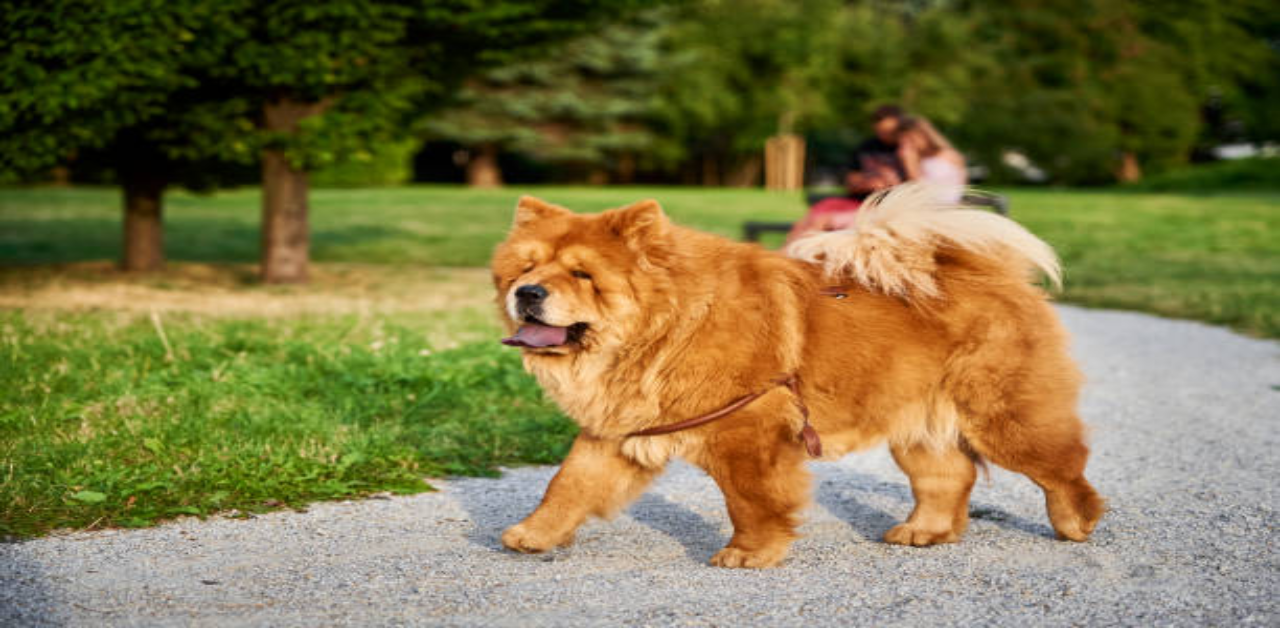Understanding the meaning of chow chow obedience training is necessary for building a healthy relationship with your chow chow. Training is important in comprehending your dog’s distinct behavior patterns and teaching them fundamental commands and proper social behavior.
You can efficiently address common challenges by implementing effective Chow Chow training tips. This guide provides insight on how best to train Chow Chows so that one can enjoy an effective relationship with their pet.
Understanding the Unique Behavior of Chow Chows
Chow Chows are known for their characteristic appearance and independent nature. Rooted in their history and natures, these qualities are essential in their behavior and training requirements.
Historical and Instinctual Background
Chow Chows are often regarded as royal dogs, reflecting their regal appearance and dignified demeanor. Historically, they were prized in Chinese culture and kept by nobility as guard dogs and companions. Their majestic presence and unique traits continue to give them an air of royalty, captivating dog lovers worldwide.
Common Behavioral Traits
Chow Chows can be stubborn and strong-willed, which may pose challenges during training. However, their loyalty and intelligence make them excellent candidates for obedience training. By understanding these traits, you can effectively employ the best training techniques for Chow Chows.
Patience and Consistency
Given their independent nature, patience and reliability are critical. Learning how to train a Chow Chow needs time and persistence, but the rewards of a well-trained companion value the energy.

Essential Basic Commands for Chow Chows
Training your Chow Chow in basic instructions is critical for their safety and your peace of mind. Commands like sit, stay, come, and heel form the basis of practical Chow Chow obedience training.
Significance of Basic Commands
Training a Chow Chow with these basic instructions helps establish boundaries and enhances communication. These commands are vital for managing your dog’s behavior in various environments.
Step-by-Step Guide to Teaching Commands
Sit:
- Hold a treat above your Chow Chow’s nose.
- Move your hand upwards, causing their bottom to lower.
- Once seated, reward with a treat and praise.
Stay:
- Ask your dog to sit.
- Open your palm towards them, and say, “Stay.”
- Step back slowly, rewarding them if they remain in place.
Come:
- Attach a leash, and let your dog wander.
- Gently tug the leash, saying “come.”
- Prize them when they approach you.
Heel:
- Walk with your dog on a string.
- Use treats to guide them to your side, saying “heel.”
- Praise them when they walk beside you.
Positive Reinforcement
Implementing the best training techniques for Chow Chows involves using positive reinforcement. Reward desired behaviors, ensuring a more enjoyable learning experience. These Chow Chow training tips emphasize encouragement over punishment to build trust and obedience.

Socialization a Part of Training
Socialization introduces your Chow Chow to many environments, people, and animals. It plays a critical role in determining their behavior and confidence. Proper socialization is vital for developing a well-balanced pet forbes and complements effective Chow Chow obedience training.
Chow Chows can be naturally aloof, making early and consistent socialization vital. Here are some practical Chow Chow training tips to help your dog become comfortable in diverse situations:
- Start Early: Socialize your Chow Chow as a puppy to build positive experiences during their formative weeks.
- Gradual Exposure: Introduce your dog to new environments slowly, starting with less crowded places and gradually increasing complexity.
- Meet New People: Encourage interactions with various people, rewarding calm behavior with treats and praise.
- Animal Interaction: Arrange controlled meetings with other animals, ensuring safety and positive encounters.
- Routine Variations: Change daily routines and routes to familiarize your Chow Chow with altered sights, sounds, and smells.
Considering how to train a Chow Chow through socialization requires patience and stability. The best training techniques will help manage their natural reserve, nurturing a well-rounded temperament.
Common Training Challenges and Solutions
Training a Chow Chow comes with exclusive challenges, often reducing their independence and sometimes stubbornness. These problems can include stubbornness, aggression, and territoriality, which may need to be clarified during training. Understanding these challenges is vital for practical Chow Chow obedience training.
Here are some Chow Chow training tips and strategies for solving these common problems:
Stubbornness:
- Use positive strengthening constantly to motivate desired behaviors.
- Keep training sessions short and attractive to sustain your Chow Chow’s interest.
Aggression:
- Identify triggers and avoid situations that provoke aggression.
- Encourage calm behavior with positive reinforcement, gradually introducing potential stressors in a controlled manner.
Territoriality:
- Establish clear boundaries using commands and consistent routines.
- Socialize your Chow Chow to reduce territorial behaviors by exposing them to different environments and people.
Maintaining Consistency and Routine
Establishing a structured training plan is critical for practical Chow Chow obedience training. Consistency strengthens learning and supports good behavior. To make training unified, incorporate simple instructions into daily routines, like having your Chow Chow sit before meals or stay while you open the door. Considering how to train a Chow Chow with a constant routine promotes security and predictability, improving their comfort. Implementing these training tips and the best training techniques results in an obedient and happy companion.
Tools and Resources for Best Training
- Equip yourself with essential tools like leashes, clickers, and treats to reinforce positive behaviors in Chow Chow obedience training.
- Combine these tools with the best training techniques for Chow Chows to create a structured training approach.
- Explore books and videos for further guidance on effectively training a Chow Chow.
- Attend training classes for practical insights and actual feedback to improve your training experience.
- Choose a professional trainer proficiently handling Chow Chows for expert training tips.
- Use the right resources to address breed-specific challenges and nurture an obedient Chow Chow.
Final Thoughts
A well-trained Chow Chow brings numerous benefits for you and your dog, strengthening your bond and creating a harmonious home. You can cultivate a disciplined and happy companion by applying practical training tips and understanding how to train your Chow Chow. Incorporating obedience training not only promotes good behavior but also supports your dog’s mental well-being.
For ongoing support and to share your experiences, connect with the Chow Chow Lovers community. By utilizing the best training techniques for Chow Chows, you embark on a fulfilling journey that nurtures a lifelong companionship. Start or enhance your training efforts today for endless joy and connection!







